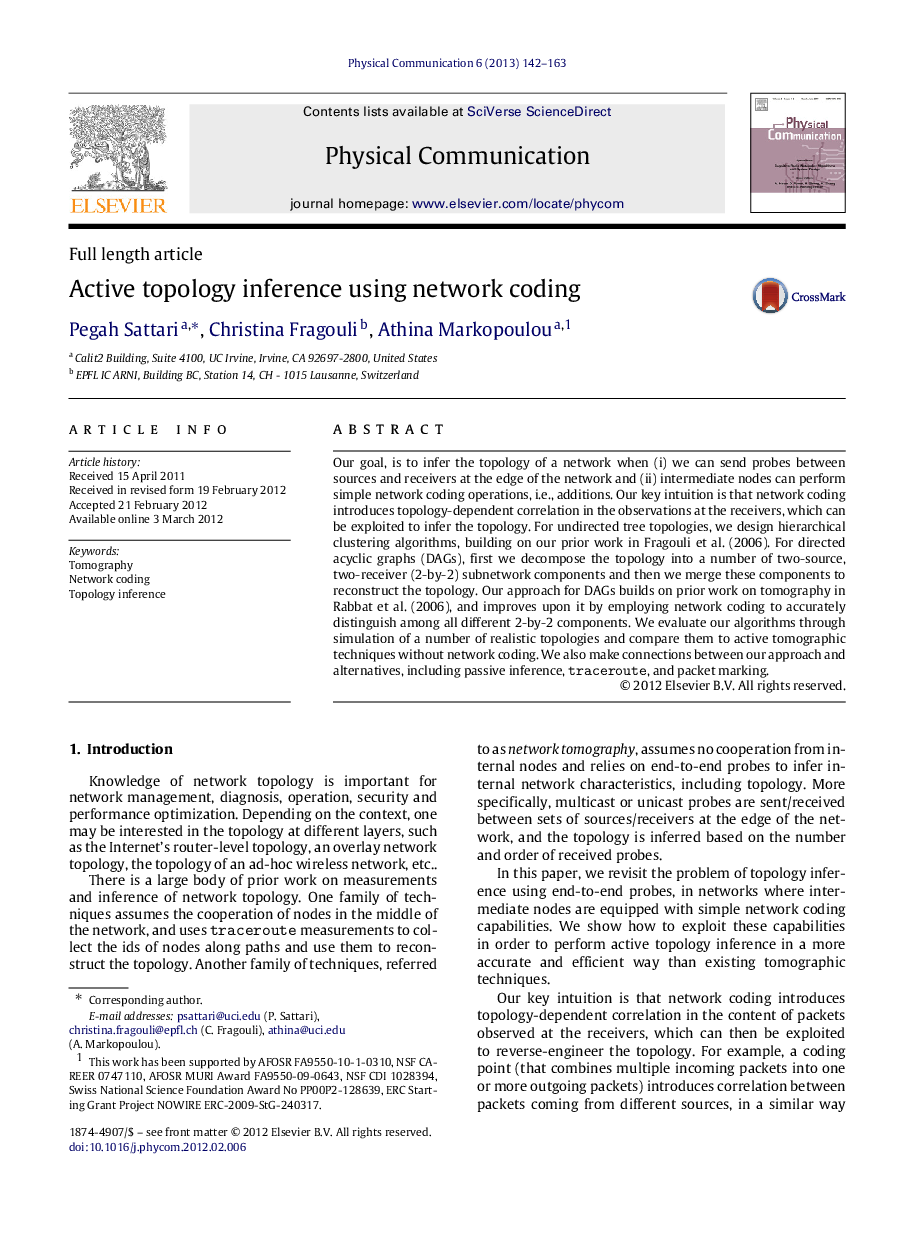| Article ID | Journal | Published Year | Pages | File Type |
|---|---|---|---|---|
| 465159 | Physical Communication | 2013 | 22 Pages |
Our goal, is to infer the topology of a network when (i) we can send probes between sources and receivers at the edge of the network and (ii) intermediate nodes can perform simple network coding operations, i.e., additions. Our key intuition is that network coding introduces topology-dependent correlation in the observations at the receivers, which can be exploited to infer the topology. For undirected tree topologies, we design hierarchical clustering algorithms, building on our prior work in Fragouli et al. (2006). For directed acyclic graphs (DAGs), first we decompose the topology into a number of two-source, two-receiver (2-by-2) subnetwork components and then we merge these components to reconstruct the topology. Our approach for DAGs builds on prior work on tomography in Rabbat et al. (2006), and improves upon it by employing network coding to accurately distinguish among all different 2-by-2 components. We evaluate our algorithms through simulation of a number of realistic topologies and compare them to active tomographic techniques without network coding. We also make connections between our approach and alternatives, including passive inference, traceroute, and packet marking.
